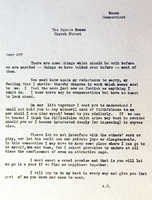Items
Site
The Medicine Chest
keywords is exactly
connection
-

Rice child (Stirrings)
"An object-study of a grain of rice by the artist Elaine Gan similarly shows the intermingling temporalities of humans, nonhumans and machines through an assemblage of images, text and vectors maps. Gan explores four temporalities within this research – the time of technologies, matter, memory and a calendar year – and installs the work as a long horizontal strip that cannot be viewed in full from a fixed position but encourages the viewer to walk ‘through time, occupy multiple positions’ and in so doing ‘trace new connections’ (Gan 2021). Time-travelling over two thousand years, Rice child (Stirrings) (2011) begins in the Mekong Delta, where the farming of champa rice facilitated the formation of stable settlements. It then follows a selection of rice varieties, revealing how they became technologies that accumulate socio-political formations, and weaves through the 2007/8 food crisis" (Liebenberg 2021: 28). -

Silver Particle / Bronze (After Henry Moore).
"In Simon Starling’s work, inanimate objects are activated in various ways, especially when their political or economic history is revealed or when their materiality becomes an embodiment of something discovered during his research. His work enables and celebrates diverse interpretations of objects in many instances, as Greenblatt (1991) notes when referring to artistic and curatorial activity, deflecting attention away from the object onto the systems that gave rise to it in the first place. Starling conducts a close inspection of his objects, usually following a web of connections across the globe and across history, which in many of his works lead him back to the starting point; a vintage photograph of a Henry Moore sculpture leads to the production of a bronze sculpture based on the shape of a single enlarged silver particle that makes up the photograph and which, when converted into a sculpture, resembles the biomorphic shapes that served as inspiration for the Moore sculpture in the original vintage photograph ('Silver particle/bronze (after Henry Moore)', 2008). The machinations of its history somehow lost in the image when seen in the museum archive come back into play through the translations and reconstructions encountered in the detour and are materialised in the exhibition format" (Liebenberg 2021: 26 - 28). -

Amelia's letter
Amelia Earhart sat down on the morning of February 7th, 1931, and penned this letter to her publicist and future husband, George Putnam: "Please let us not interfere with the others’ work or play, nor let the world see our private joys or disagreements. In this connection I may have to keep some place where I can go to be myself, now and then, for I cannot guarantee to endure at all times the confinements of even an attractive cage".


